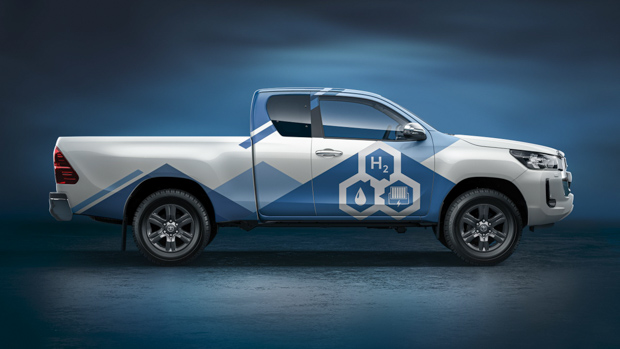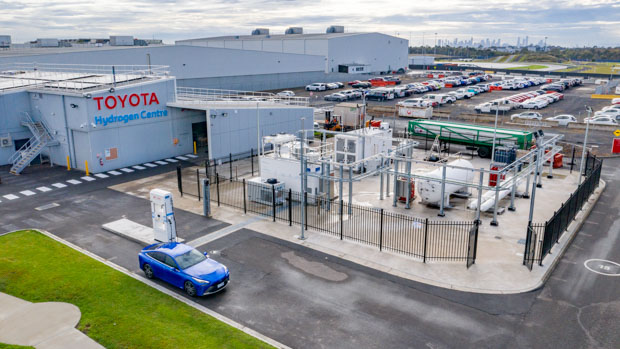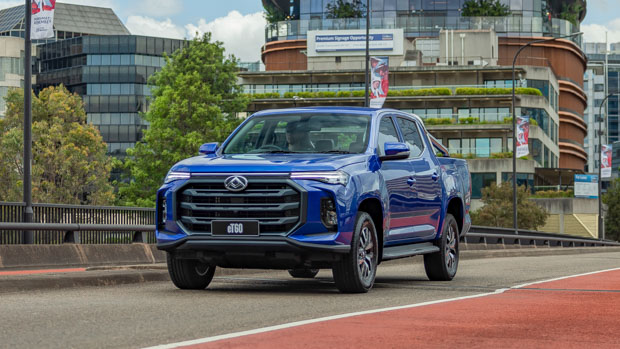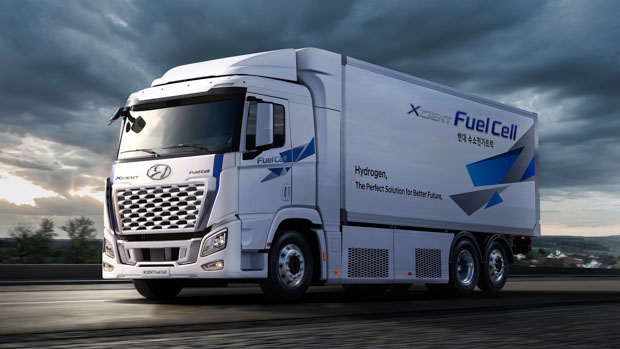-
Car Reviews
- All reviews
- Midsize SUVs
- Small cars
- Utes
- Small SUVs
- Large SUVs
- Large cars
- Sports SUVs
- Sports cars
- Vans
Latest reviews
- Car News
-
Car Comparisons
Latest comparisons
- Chasing Deals
The race for a zero-emissions ute has gained a surprising new entrant and it’s getting attention from Toyota’s local team
Toyota’s Australian outlet has confirmed it is watching the development of a hydrogen-powered Hilux in the UK with “great interest”.
The project, announced earlier this week by Toyota Motor Manufacturing UK, was created in an effort to bring zero-emission technology to the commercial vehicle market.
Engineers will begin building the prototypes in 2023 using Toyota’s second-generation hydrogen fuel-cell technology sourced from the Mirai sedan, a vehicle that is currently leased in limited numbers in Australia, primarily for business purposes.
A Toyota Motor Corporation Australia (TMA) spokesperson told Chasing Cars it welcomed the announcement and was watching the project closely.
“This project shows Toyota is continuing to research and develop new electrified vehicles and technologies designed to help customers reduce carbon emissions,” they said.
“We will follow the development of these prototype vehicles with great interest, particularly given the importance of Hilux as the best-selling vehicle in our market.”
With the project only just announced, it’s unlikely that we will see any developments here in Australia anytime soon, but the fact that the hydrogen-powered Hilux is being developed in a fellow right-hand-drive market means potential local adoption would be more straightforward.
TMCA has a long history of supporting the development of hydrogen fuel-cell technology in Australia and renewed its commitment last year when it opened a hydrogen refuelling facility at its Centre of Excellence in Melbourne’s southwest.
The Toyota Hydrogen Centre, in Altona, produces and stores hydrogen on site using a 200kW electrolyser, drawing power from a combination of 100kW battery storage, a 87kW solar array and the mains grid, according to Toyota.
The facility is used as the primary refuelling location for its Mirai customers and could provide a future operating base for the hydrogen-powered Hilux if it came to Australia.
Globally, Toyota has been keen to show the broad capabilities of hydrogen technology, with the brand conducting a long-distance test to prove the Mirai could travel 1360km on a single tank and entered a modified Corolla using the technology in a Japanese endurance race to show off its durability and capability in motorsport.
A spokesperson from Toyota Australia told Chasing Cars that hydrogen would continue to play a significant role in its future plans.
“Overall, hydrogen infrastructure is slowly developing in Australia. In addition to our refuelling station at our Centre of Excellence, other industry stakeholders have sites under development in Melbourne and Brisbane, and operational sites in Perth and Canberra,” they said.
“We expect the Mirai FCEV to become more viable as refuelling infrastructure grows and would like to see it become more readily available within the next couple of years.”
“Hydrogen and fuel cell technology play a significant role in Toyota’s global goal of achieving carbon neutrality by 2050. We will continue working with Government and Industry partners to support the further development of the hydrogen economy in order to maximise the role hydrogen can play in a decarbonised society.”
While full electrification has been widely accepted as the leading technology for future zero-tailpipe emissions passenger vehicles, the situation is more complicated for commercial vehicles.
Both light commercial vehicles (such as the Hilux) and heavy commercial vehicles (such as a traditional semi-trailer) are designed to carry and pull heavy loads, which places a sharp restriction on driving range, regardless of the drivetrain used.
The limited energy density of lithium-ion batteries and long charging times associated with EVs has made the technology a hard sell to replace diesel powertrains in commercial vehicles, which are traditionally favoured for their low-end torque and efficiency, albeit also bringing high emissions.
For context, Australia’s first and only electric ute on sale is the LDV eT60, which extracts a driving range of 330km from a huge 88.55kWh battery, and claims a payload and towing capacity of 1000kg – the latter well shy of the 3500kg figure that has become common and expected in the midsize ute segment.
Due to the size of the battery, the eT60 takes roughly nine hours to fully recharge using an 11kW wall box, or around 45 minutes for its range to be topped up from 66km to 264km when using an 80kW charger – a usability hurdle that may prove difficult for some users.
Hydrogen fuel cell technology features the key ability to not only travel further than most battery-electric vehicles but also to refuel a lot quicker – taking around five minutes to fill its highly-pressurized tanks in most cases.
Hyundai is currently trialling its XCIENT Fuel Cell trucks around the world and has previously expressed interest in bringing the trucks to Australia, though with our limited infrastructure, even its healthy 400km range claim would make it unsuitable for interstate delivery duties.
Ford is believed to be developing both a plug-in hybrid and a fully-electric ‘Lightning’ variant of its Ranger ute and has already released the full-size F-150 Lightning pickup in North America.
Mitsubishi is also believed to be developing a plug-in hybrid drivetrain for its next-generation Triton ute and Isuzu has also expressed interest in electrified drivetrains in the future, though few details are known.
After several years of delays, Tesla claims it will deliver its first fully-electric Semi Truck before the year’s end with its CEO Elon Musk recently announcing in a tweet that it was able to travel over 800km with a payload of almost 37 tonnes – though this is yet to be tested independently.
More locally, Volvo Group Australia has been offering its medium-duty FL box trucks to businesses in Australia on a trial basis, with a focus on delivering items within metropolitan areas.
It remains to be seen what technology prevails as the go-to solution for future commercial vehicles but as each becomes more refined and capable over time, the goal of zero-tailpipe emissions across all forms of transport inches closer to becoming a reality.
Latest news
About Chasing cars
Chasing Cars reviews are 100% independent.
Because we are powered by Budget Direct Insurance, we don’t receive advertising or sales revenue from car manufacturers.
We’re truly independent – giving you Australia’s best car reviews.





